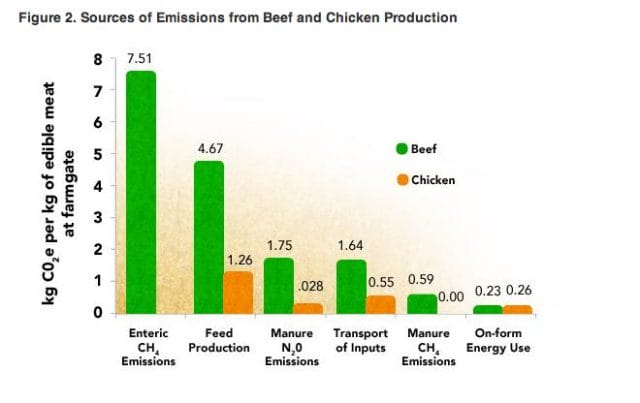US Meat Consumption, Pounds Per Person

Annual Consumption (lbs) per Capita, 1909-2012. Source: NPR. Data via Earth Policy Institute
For the first time in over a hundred years, we eat more chicken than beef.
Per capita chicken consumption in the US has risen from under 20 lbs in 1909 to about 60 lbs in 2012. During this same time span, beef consumption has dropped from a peak of over 80 lbs per capita in the 1970s to under 60 lbs in 2012. We eat as much beef now as we did in 1909.
Many different factors are possibly in play here. For one thing, a head of beef has always been relatively pricey compared to other forms of meat. Over the past 20 years, beef prices have risen drastically versus broiler (chicken) and pork.

Source: Beef Magazine.
The rising costs of beef coincide with the decreasing total inventory of calf and cattle in America, which hit a 60-year low last year. The CME Daily Livestock Report places the blame on rising oil and grain prices, as well as on NGOs that oppose meat consumption.
While this may be true, the energy requirement to produce 1 kg of beef is inherently higher than what is needed for 1 kg of chicken:

Source: Environmental Working Group
The rise of chicken can also be attributed to its versatility; beef generally takes longer than chicken to prepare. So not only is chicken easier to cook, but it’s also cheaper to buy and to produce than its heftier meat relative.
Chicken is also a white meat, which many people characterize as leaner than red meat. Red meat is claimed to be linked to higher cancer and heart disease risks. Red meat’s stigma can’t help but play to chicken’s advantage.
We are enjoying a golden age for poultry. Which probably doesn’t bode well for your neighborhood chicken.
To get occasional notifications when we write blog posts, sign up for our email list.



